
| A Little About Creative Process | Artist's Statement | Artist's Resume |
| Brief Biography of the Artist | BBOH | Unique Editions™ |
| Glimpses Into the Creative Process |
Artist's Statement
I have always been a maker of art and I passionately and happily make art all the time. At the very core of my being, I am compelled to create!
A while back, frustrated with photography, my primary art-making tool, a reluctant me experimented with making images on the computer. I was immediately and totally captivated by the experience. Now, computer technology has morphed me into a mixed-media/digital fine-artist who combines the use of the new digital art-making tools with traditional ones such as etching, painting and photography. I call the hybridized process "tradigital" art and I find it inspiring with rich and serendipitous possibilities.
Being the agent of the process of transformation is deeply satisfying but I have goals that go beyond that personal delight. It is very important for me to communicate what I discover as I explore and depict the forces and circumstances that shape our lives. I strive to have my viewers contemplate the "product" of my explorations which I hope will connect to their own journey.

With Camera
Photo by Saelon Renkes
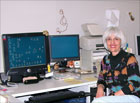
With Computer

Preparing a Surface
A
Little About Creative Process
When people ask me if my work is "computer-generated art", I
consistently respond "the tools don't create the art, the artist does!" That
said, I acknowledge that the tools do, in fact, interact and collaborate
with me as I work.
Even when I was a novice technology user my creative ideas were exploding
with energy. The new tools seemed more directly linked to my mind and
imagination than most art-making ones I had loved and worked with before.
My current "tradigital" studio,
which contains a mix of traditional and digital tools, has allowed me to follow
new creative paths.
I believe that there are many simultaneous spiraling activities taking
place when I work; images linger in my mind and inner eye and began to
take up space and "bother" me and some images and ideas just hang out
and demand musing time. A lot of this seems to go on as an internalized
dialogue but also there is some sort of non-verbal stream of thought.
When working, I might start with a digital photograph or scan, a printed photo,
monoprint, etching, drawing or real object and then begin to work with and alter
the digitized information. Or I might begin painting directly in the computer
using graphic art software. After I print the image I can alter the surface with
paint or colored pencils or collage elements on it and then I can choose to rescan
that and work on it in the computer again.
The technologies I used for one body of work enabled me to scale up extremely
small bits and pieces of source photos and etchings and in that process I uncovered
and expanded previously hidden components. I then fabricated new images from
those fragments and found myself led in some unexpected directions (the image "At
Sea" is an example).
I am surprised to see that the technology and equipment demands so much care
and feeding. While formidable, these realities have not yet stopped me because
the creative rewards are so great. I'm amazed that in and of itself, creeping
mastery of the tools also brings me satisfaction.
Glimpses into the Creative Process

Elements
Some basic components for this image are photographs of ripples in water, of clouds and rocks and of a young man and woman (their dog was looking on as they posed within a hoop of a large barrel). |
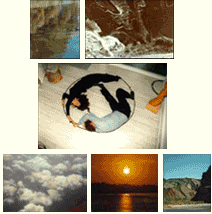
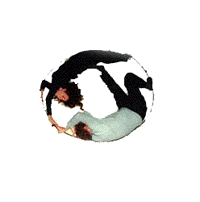
Click to start animation.

Molten Elements
| Some basic components in this image are photographs of a couple, of a sunset on the Nile, of moving flares seen from a taxi window in Calcutta and of a scan of an original woodcut. The sources were scanned and then highly manipulated in Adobe® Photoshop® and in Corel® Painter™. |
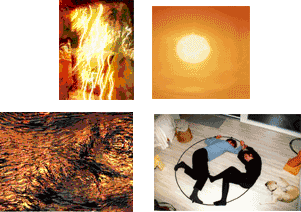
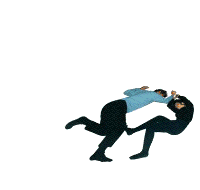
Click to start animation.
Brief Biography of the Artist
The artist was born in New York City where cultural abundance
filled her life. She always made art and as a young child, became interested
in photography when she "helped" her father work in his darkroom. In college
she was an art major who had the great fortune to study with leading artists
of the abstract expressionist school.
Golden became a secondary-school teacher of art and photography, studied commercial
photography and then moved to California where she operated a commercial photography
business, made photo greeting cards and photo-based jewelry and continued to
make fine art, mostly with a camera. Along with other pioneering artists in the
early 1990s she began making art using computer technology tools and was the
first curator/director of "Art at the Pond", which was a San Francisco exhibition
venue for digital art.
She was a founding member of the digital art collective, Unique Editions(TM)
with whose members she was, in July of 1997, an Artist-In-Residence at the National
Museum of American Art at the Smithsonian in Washington DC. At that time Golden
had an image curated into the permanent collection of the museum. She is a Laureate
of the 1998 Computerworld Smithsonian Information Technology Innovation Distinction
and a recipient of the 1998 André Schellenberg Award in Fine Art.
Golden is a founding member of 911 Gallery and of The Main Gallery cooperative
in Redwood City, California. She regularly exhibits in solo, juried and invited
exhibitions and the work has been shown and sold to private and corporate clients
both nationally and internationally. Venues include: The Triton Museum of Art,
The San Jose Museum of Art, Stanford University, The Ansel Adams Museum, San
Jose Institute of Contemporary Art, Los Gatos Art Museum and venues in New York
City, Washington D. C., San Francisco, Los Angeles, Canada, Europe and Asia.
The work has been discussed on radio and television, written about in books and
publications and appears on the internet most notably as the first exhibition
of the new Silicon Valley Art Museum.
In order to educate the public, collectors and galleries about the new digital
tools she gives talks and participates in public presentations. She works as
a research consultant for companies where she has opportunities to evaluate and
shape new technologies in hardware, software and media and then provide those
companies with feedback from an artist's prospective.

BBOH
After I create an image I go to some lengths to protect the information by archiving and saving it in multiple, protected locations. Since 2003 I have added one last touch to my files before I archive them, I embed a very small logo made up of the letters BBOH.
BBOH stands for Bluebird of Happiness. Placing that tiny logo in each file is my tribute to a dear friend who has sustained me through challenging times and who has helped me learn how to live life with appreciation and awareness.
It is not likely that you would be able to find the BBOH when you look at my images as it is barely perceptible. They are small and the colors are selected to help them blend in. I keep a log for the placement of each one's x and y coordinates or else I too would have a hard time locating them.
ARTIST'S RESUME
Exhibitions, Publications, Presentations and Panels
(Click here for full Resume)
UNIQUE EDITIONS™
(Hagopian, Ruth. "Five Part Harmony," OnLine Design, May 1995)
Unique Editions™ was a pioneering digital art collective of five internationally known artists; Helen Golden, Bonny Lhotka, Judith Moncrieff, Karin Schminke, and Dorothy Simpson-Krause. It was an educational, standard-setting and marketing entity which spoke to issues, processes, corporate involvement in the arts, hardware and software issues and how substrate companies may best work with digital artists and corporations dealing with this subject.
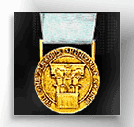
National Museum of American Art Hosts Unique Editions™ Digital Atelier
(Click to read Museum's Press Release)
